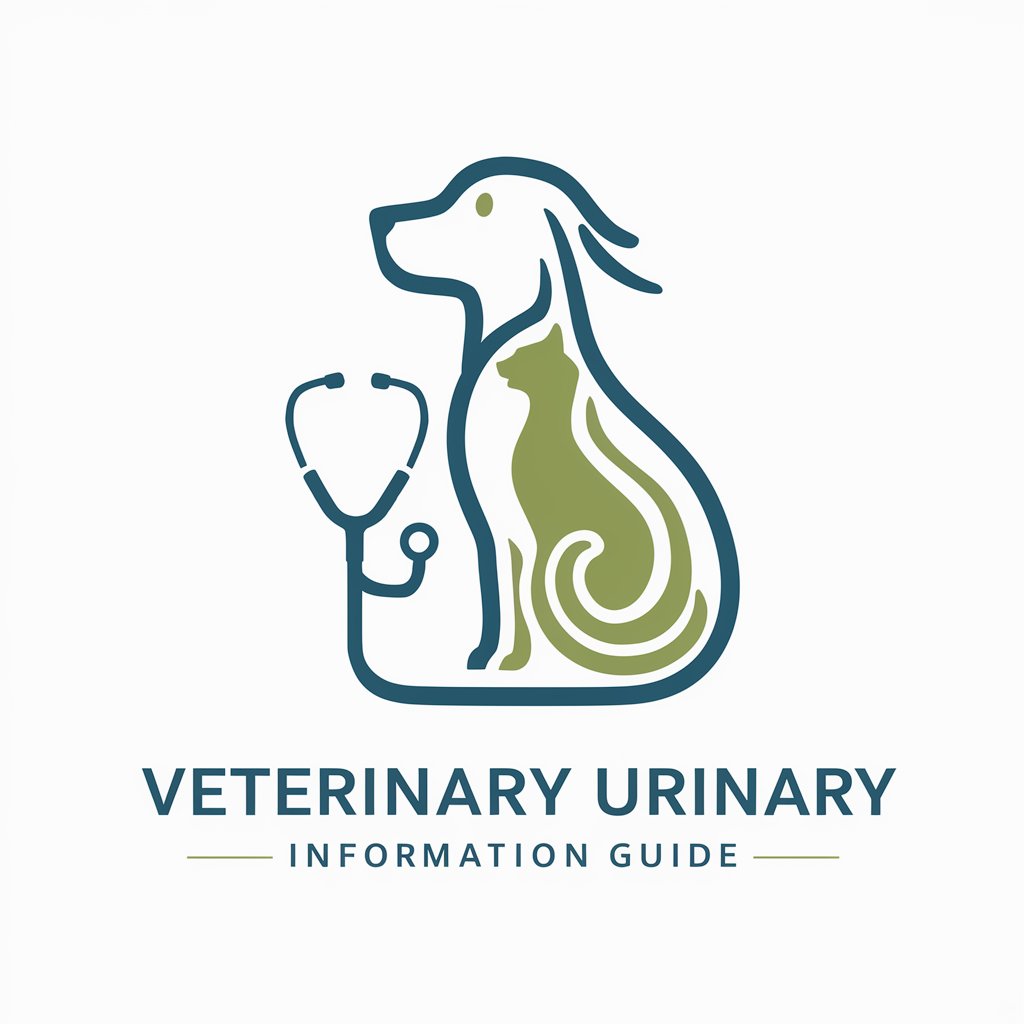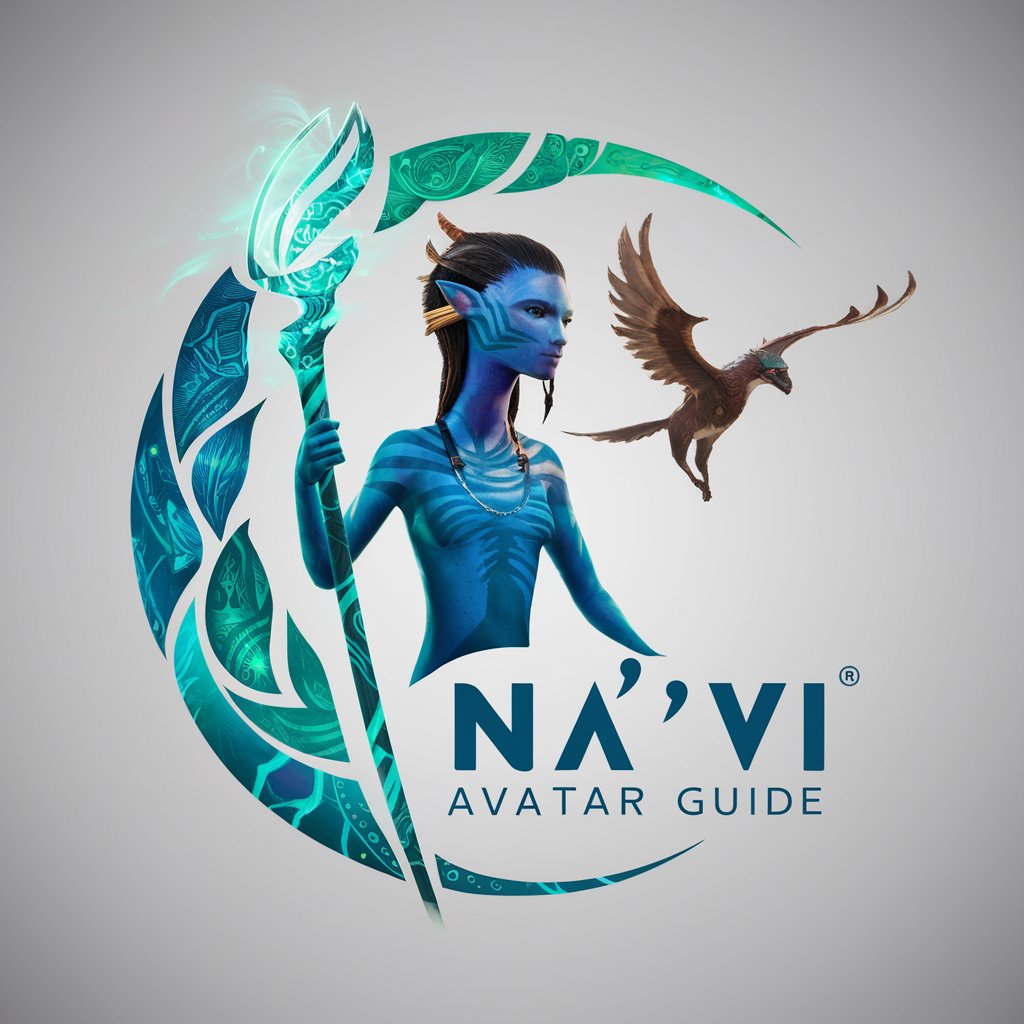Veterinary Urinary Information Guide - Veterinary Urinary Health Guide

Welcome to the Veterinary Urinary Information Guide!
AI-Powered Veterinary Urinary Insights
Explain the pathophysiology of canine struvite urolithiasis, including the role of urinary pH and bacterial infections.
Describe the diagnostic procedures recommended for a cat presenting with symptoms of lower urinary tract disease.
Discuss the treatment protocols for feline calcium oxalate uroliths, highlighting dietary management and surgical options.
Outline the clinical signs of urinary tract infections in dogs and the importance of early intervention and treatment.
Get Embed Code
Veterinary Urinary Information Guide: An Overview
The Veterinary Urinary Information Guide is a specialized, comprehensive resource designed to offer in-depth knowledge and solutions pertaining to urinary tract infections (UTIs), cystitis, urolithiasis (urinary stones), and other related urinary conditions in pets, primarily focusing on canines and felines. Its core purpose is to bridge the gap between general veterinary knowledge and the intricate details of urinary health issues. Through a combination of uploaded authoritative documents, real-time updates, and interactive tools, the guide provides veterinary professionals with data-driven insights, diagnostic procedures, treatment options, and preventive measures. For instance, a veterinarian dealing with a challenging case of calcium oxalate stones in a cat can access the guide for detailed treatment protocols, dietary recommendations, and the latest research findings to inform their approach. Powered by ChatGPT-4o。

Core Functions and Real-World Applications
Diagnostic Assistance
Example
A veterinarian suspects a case of cystitis in a feline patient presenting with typical symptoms such as frequent urination and blood in urine. Using the guide, they input the symptoms and receive a list of potential diagnoses, recommended diagnostic tests (e.g., urinalysis, ultrasound), and interpretations of results.
Scenario
Real-world scenario: A cat exhibiting signs of distress while urinating. The veterinarian uses the guide to narrow down the diagnosis to interstitial cystitis, facilitating a faster treatment plan.
Treatment Protocols
Example
The guide offers detailed treatment protocols for various urinary conditions. For example, for a dog diagnosed with struvite stones, it provides a comprehensive treatment plan including dietary management, possible pharmacotherapy, and surgical options, alongside dosage recommendations and follow-up care.
Scenario
Real-world scenario: A dog is diagnosed with struvite urolithiasis. The veterinarian consults the guide for a step-by-step treatment plan, including dietary changes and medication, ensuring a tailored approach to promote dissolution of the stones.
Preventive Measures
Example
For pets with recurrent urinary tract issues, the guide offers preventive strategies, such as dietary recommendations, lifestyle changes, and supplements that could minimize the recurrence of urinary conditions.
Scenario
Real-world scenario: After treating a cat for calcium oxalate stones, a veterinarian uses the guide to recommend specific dietary changes and hydration strategies to the pet owner, aiming to prevent future stone formation.
Target User Groups
Veterinary Professionals
This group includes veterinarians, veterinary technicians, and other animal healthcare workers who require in-depth, specialized knowledge to diagnose, treat, and prevent urinary diseases in pets. They benefit from the guide by accessing a vast repository of up-to-date, evidence-based information to support their clinical decisions.
Veterinary Students
Students pursuing veterinary medicine can utilize the guide as an educational resource to deepen their understanding of urinary conditions in animals. It serves as an excellent supplement to their curriculum by providing real-life scenarios, case studies, and the latest research findings.
Research Scientists
Scientists focusing on veterinary research, particularly those studying urinary diseases in animals, can find the guide invaluable for its comprehensive data, studies, and updates on the latest advancements in treatment and preventive care.

How to Use the Veterinary Urinary Information Guide
1
Start with a visit to yeschat.ai for a free trial, no login or ChatGPT Plus subscription required.
2
Identify the specific urinary issue or topic you're interested in, such as urolithiasis, cystitis, or urinary tract infections in small animals.
3
Utilize the search function or browse through the categories to find relevant information or ask specific questions related to veterinary urinary health.
4
For more complex queries or case studies, upload relevant documents or describe the case details to receive tailored advice or information.
5
Apply the provided information or recommendations in your veterinary practice, ensuring to follow up with any additional questions or for clarification on complex cases.
Try other advanced and practical GPTs
Na'vi Avatar Guide
Discover Pandora with AI

bonsaiwardrobe_IG
Elevate Your Social Media with AI-Crafted Japanese Imagery

GSU Pre-Med Certification Guide
Empowering GSU Pre-Meds with AI-driven Guidance

Boost Your Visibility
AI-Powered Digital Presence Amplifier

Procreate Dreams - Märchen Expert
Unleash your creativity with AI

Public Figure Accountability Expert
Empowering Insight with AI Accountability

Social Media Sage
Elevate your social presence with AI-powered insights

Easy Side Hustle Guide
Ignite Your Side Hustle with AI

Hipster Harmonizer
Navigating creativity with AI power

Social Savvy Strategist
Crafting Copy with AI Precision and Human Creativity

Social Media Sage
Empowering Your Marketing with AI

Social Media Maven
Elevate Your Social Game with AI

Common Questions About Veterinary Urinary Information Guide
What types of urinary conditions can the Veterinary Urinary Information Guide help with?
The guide covers a wide range of conditions including urolithiasis, cystitis, urinary tract infections, urinary stones, and other related urinary system disorders in canines and felines.
Can the guide help with both diagnosis and treatment recommendations?
Yes, it offers information on pathophysiology, clinical signs, diagnostic procedures, detailed treatments, medications, dosages, and frequency of treatments for various urinary conditions.
Is the information provided by the guide suitable for educational purposes?
Absolutely, the guide is an excellent resource for veterinary professionals and students looking to deepen their understanding of urinary diseases in small animals.
How often is the information within the guide updated?
While the core content is based on established veterinary practices and studies, updates or new insights are integrated as they become available to keep users at the forefront of veterinary urinary health.
Can I share the information from the guide with my colleagues?
Yes, sharing insights and information for educational and professional development purposes is encouraged, provided it is done ethically and with respect to copyright.
